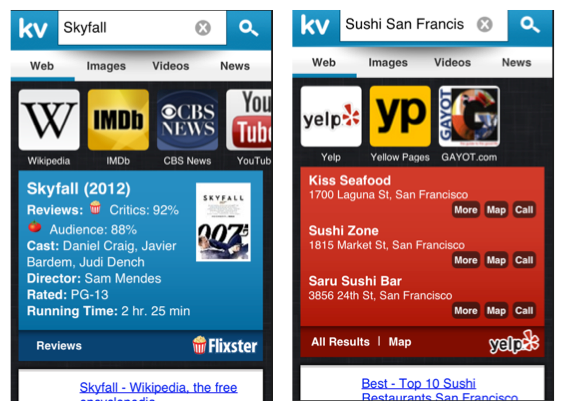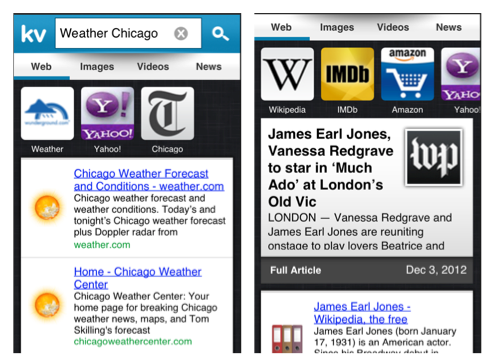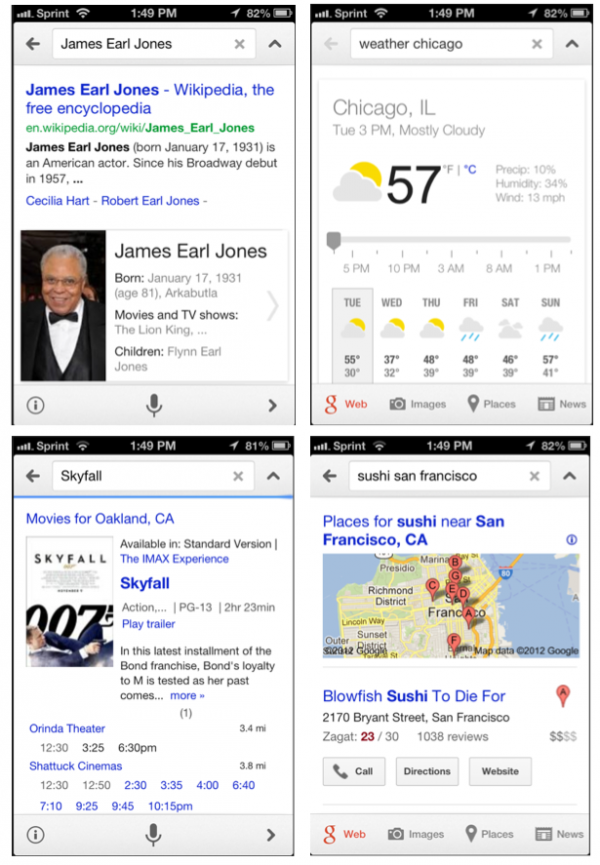KickVox Takes Aim At “10 Blue Links” With New Visual Mobile Search App
A few years ago VCs and entrepreneurs believed that there was an opportunity to disrupt online search, to offer a more compelling or next-generation experience. Companies like Powerset, which was sold to Microsoft, were among a class of search insurgents that spoke broadly about the opportunity to go beyond what Google was doing. That battle for the […]

That battle for the hearts and minds of users on the PC was essentially lost. The fight has now shifted to mobile with the advent of Siri, “personal assistants,” ambient discovery and predictive search. Google is evolving along these lines as well with enhanced voice search and Google Now.
Yet despite the more recent failures of novel mobile search engines such as Taptu and Do@, a new crop of players is making a run at Google and mobile search. Making the familiar argument that “mobile search is broken” and that “10 blue links” are poorly adapted to the mobile experience, a new company called KickVox has created a “visual” mobile search app for both the iPhone and Android.
KickVox tries to simplify navigation and integrate more information directly into results rather than asking users to visit third party websites. It relies heavily on images and publisher icons to direct people to branded content and trusted information.
In some respects it looks a great deal like Nuance’s Dragon Go! “meta search” app. In other ways KickVox operates like a browser and reminded me a bit of Yahoo’s Axis.
In the following search results for the film “Skyfall” and the query “Sushi San Francisco,” you can see KickVox’s more visual style and approach on display. The icons across the top of the page scroll horizontally and provide different results by directory or publisher.
Here are two additional results for the actor James Earl Jones and the query “Chicago weather.”
Many people will find this appealing and a much richer experience than what Google currently offers for smartphones. However I’m not sure that the innovations and UI will be enough to sway current mobile search users. The prominence of Google search on Android handsets and the default position of Google search on the iPhone are significant barriers for any aspiring mobile search challenger to overcome.
Although some percentage of search activity has shifted from the browser to apps — though how much precisely isn’t clear — Google is more dominant in mobile search than on the PC. The company has a roughly 96 percent share of browser-based mobile search worldwide.
In addition, Google is adapting and improving its mobile search experience. The following are screenshots from Google on the iPhone for the same queries performed above: weather Chicago, James Earl Jones, Skyfall and sushi San Francisco.
In many cases, though not all, Google has clearly moved beyond the much-maligned “10 blue links” in mobile. And it will be enormously challenging for companies such as KickVox (and others) to get people off their “Google habit.” That doesn’t mean they shouldn’t try or that you shouldn’t test out KickVox to see for yourself whether it offers something more compelling.
The KickVox app can be downloaded from iTunes or Google Play.
Opinions expressed in this article are those of the guest author and not necessarily Search Engine Land. Staff authors are listed here.
Related stories


